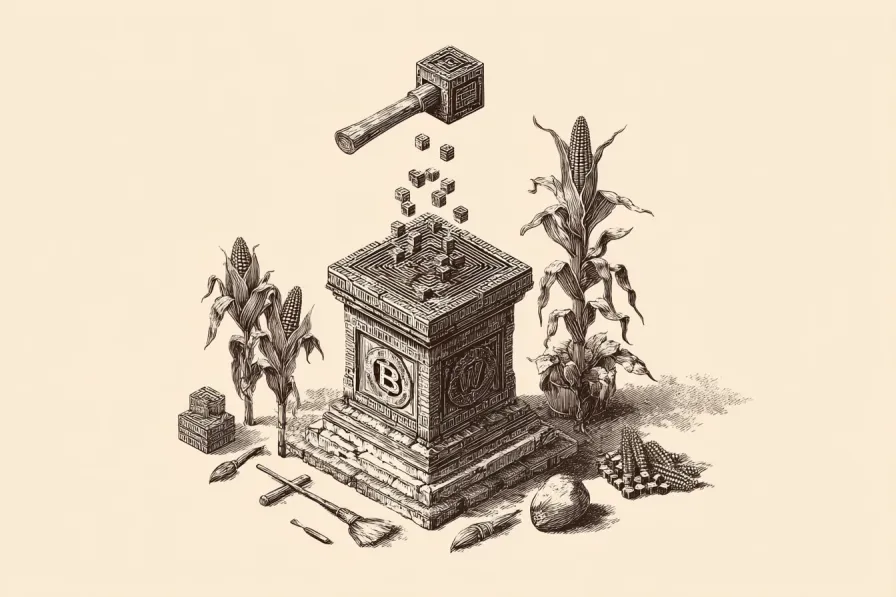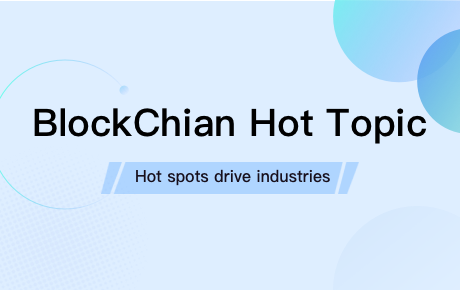Block Rewards Are So Taxing



How should block rewards be taxed? What even are block rewards really? These seemingly basic questions are, we think, fundamentally misunderstood by most of web3. And, as a result, many policy proposals out there contain glaring loopholes and inconsistencies. So what are going to do here is go through the mechanics of block rewards, build a sort of classification scheme for the many types of rewards we see in the wild, and then evaluate some policy proposals from the real world.
Spoiler alert: much of the analysis out there misses essential points. And the arguments made appear self-serving and fall flat upon analysis.
What Are Block Rewards?
In proof-of-work networks like Bitcoin, the miner of each block is "rewarded" with some payment denominated in the network token for doing the work to produce the block. Coin Center, among others, describes these tokens as " new property created by participants in an open network ." Put a pin in that for now. The block producer also receives all the fees collected for building the block. No one can reasonably question that the transaction fees are taxable upon receipt like any other fees.
In proof-of-stake networks like Ethereum validators are rewarded with some fraction of the total fees paid pay parties transacting in each block they validate. There is no additional "block reward from mining" because there is no mining. Sometimes all the fees get distributed to validators (or other network participants) in what is clearly a closed-system with no property being created or destroyed. Other times some fraction of the fees are burned while others are distributed, creating a sort of deflationary environment where, still, everyone is being paid in existing property. And then there are cases where fees are pooled, some quantum of new tokens are added, and the network redistributes the total (again, possibly less some burning) to participants. In these cases there might be new property, a mix of new and redistributed property or even just outright destruction of property with a sliver of redistribution.
Still other networks have a sort of "project treasury" that emits fresh tokens for some period to encourage, through subsidy, more people to participate in the staking processes. And over time as the subsidy is withdrawn the system devolves to some combination of burning and redistributing existing property.
The two key points here are that many schemes exist and it is not always the case that block rewards are fresh property.
Property From Where?
Imagine a simple system where validators share all the fees and some treasury subsidizes this for a fixed period of time, to a fixed degree, and for a fixed number of tokens. In this case the treasury contains, at the beginning, all the subsidy tokens that will ever be handed out. There is no creation or destruction of property once the system is initialized.
In this case we would expect validators to get taxed on receipt as the system is just reallocating existing resources within a closed environment. That is, unsurprisingly, pretty much the same as a currency on a gold standard.
But what of Bitcoin? We can think of Bitcoin as having a treasury that contains 21 million minus the already-issued tokens. Does it really matter if the tokens exist in an Ethereum smart contract and get sent out by that contract or if they exist in the Bitcoin node code and get sent out by that program? None of these are physical goods they are just computer records. If we think of mining rewards as coming from a special address – and this is how they have been implemented in the Bitcoin code since 2009 – then locked treasury tokens are precisely as much existing property as undistributed Bitcoin.
Stop there for a second. If a tax system seems to treat like transactions alike then it must treat Bitcoin mining rewards identically to the programmatic distribution of pre-mined tokens. There is no real difference between those two schemes. They are simply different ways of describing functionally-identical software.
And this arrangement is the same for all systems where all future mining or validating rewards derive only from a mixture of a) recirculating fees paid with existing tokens and b) token emissions with a known-in-advance total cap built into automated software.
As there is no real argument that companies should not be taxed in the current period for services provided and paid for with existing property in the current period then all of these schemes should be taxed on receipt.
We agree entirely with Coin Center when they write :
We don’t tax a farmer the moment crops grow in the field or an author at the moment they finish a manuscript. We tax income when property is sold or exchanged for something of value.
But Bitcoin and other networks where block rewards stem entirely from redistribution or fixed-in-advance treasury disbursements look nothing like corn. They look like being paid in a currency with a fixed and known-in-advance supply schedule. Of course operating expenses should be deductible for tax purposes in line with normal rules. But for many – indeed the vast majority – of networks out there no new property is created.
At this point it is worth noting that the native token for every "deflationary" blockchain behaves this way. Why? Consider how these things work. Assume, to be generous, that a blockchain burns all paid fees and then mints half the quantum of those fees as fresh tokens to distribute among validators. Is there new property? These tokens are not corn. They are not physical objects. They are digital records and all the tokens involved are fungible. If you read your email on two devices did you receive twice as many emails? Of course not. The net result of the software is to burn some tokens and redistribute others. No new property. Calling your function mint() does not mean it generates new property if your software also ensures burn() is always called more often. What matters is what the software does.
Is There New Property at All?
Now what about a process where fresh tokens are emitted ad infinitum and there is no supply cap? This case, unlike the above, is hard. Imagine a simple system where an additional million tokens are emitted evenly over every year and shared among all validators. If the tokens are created by software as each block is validated they might plausibly be new property. But what if the million tokens run from January 1st through December 31st each year but are minted on December 1st in advance of the year-end in some kind of treasury top-up function? Are those tokens new or existing property when distributed? Recall these are just digital records of fungible property.
In these cases there is no real argument the tokens are any "newer" when paid than with Bitcoin. A simple piece of software is emitting the same number of tokens no matter what else happens in the world.
That is not how corn works.
Now if the network were designed to redistribute twice the total fees back to validators as fees – minting an addition token for each token in total fee paid – then we have something akin to corn. The more "economic work" the network does the more property is created and the more fee is collected. In these arrangements at least some fraction of the tokens are new property akin to corn.
The rules here should probably tax receipts pro rata based on the overall fraction of tokens emitted de novo vs simply redistributed. That might prove a bit too complex for some networks. Here, truly, there are interesting open questions. But networks do not work this way. People want to burn fees and create deflationary tokens. The sub-specialization "the taxation of block rewards in blockchain networks with inflationary native tokens" is arcane and of interest to approximately nobody. It is too obscure even for this column!
What Is New Property After All?
The corn analogy is interesting but perhaps a bit too abstract. Farmers do work to grow corn. So does the sun. And the rain. Corn is a group effort and, as it is perishable, corn gets sold for money and taxed relatively quickly anyway.
The better analogy is art. Artwork is the output of the work to create it. But no new physical materials are produced. Paint is layered on canvas. Stone is chipped away from stone. Maybe there is a bit of mild chemistry at play. And occasionally art takes the form of a device that can perform a function. But usually creating art is a process akin to shuffling a deck of cards with painstaking care: it is just reorganizing simple physical materials. This is best encapsulated by an artist who worked almost exclusively on commission (i.e. he was paid cash for his work) and often with the oldest of building materials: stone.
The sculpture is already complete within the marble block, before I start my work. It is already there, I just have to chisel away the superfluous material.
Michelangelo – and this is not a criticism of his work – did not create any new marble. He simply separated the superfluous extra bits from the rest of the block. That is what happens when you peel an orange. And Michelangelo, or more often his patron, was the owner of newly created property that emerged as a result of those efforts.

That property existed, and had value, independently of the stone that came before it. David is not valued because it was produced from a particularly nice block of marble nor is the Sistine Chapel ceiling appreciated because the paint was expensive. The artist created no new materials yet new valuable property was clearly created. These works look nothing like the mechanical shuffling of digital accounting records within a computer. You cannot pay your accountant to produce another Pieta .
Art is new property when produced. And in cases cited above the artist was paid to create them in a way we would recognize as taxable today (whether anyone actually pays taxes in Italy, Renaissance or otherwise, is an entirely separate question). This is nothing like most block reward schemes where the process simply redistributes tokens that already exist in digital form and will never exist in any other . Likening the process of conjuring a masterpiece from a simple block of stone to the reallocation of digital database records within a closed-loop system is disingenuous at best, insulting and entirely inconsistent with the technical realities of most existing blockchain systems.
Miners and validators are simply getting paid in digital accounting entries and should be taxed when those entries assign ownership to them. This should be obvious because it is also how banks work. If your business performs a service for someone and they fund their bill payment with a bank loan you got paid with freshly created money. Is that not still taxable on receipt? Do you need to care exactly which functions within your bank's database software were responsible for each credit? That would be insane.

Blockcast 72 | Licensed to Shill V: GENIUS & CLARITY Act - Policy, Governance and Much Needed Clarity
In this episode, we explore the transformative impact of the Clarity Act on digital asset regulation...

On-Chain Resilience and Macro Relief Drive Crypto Upside
Your daily access to the backroom....

Animoca JV Anchorpoint To Pursue HK Stablecoin License
Animoca Brands, Standard Chartered Bank (Hong Kong) Limited and HKT announced the formation of Ancho...

